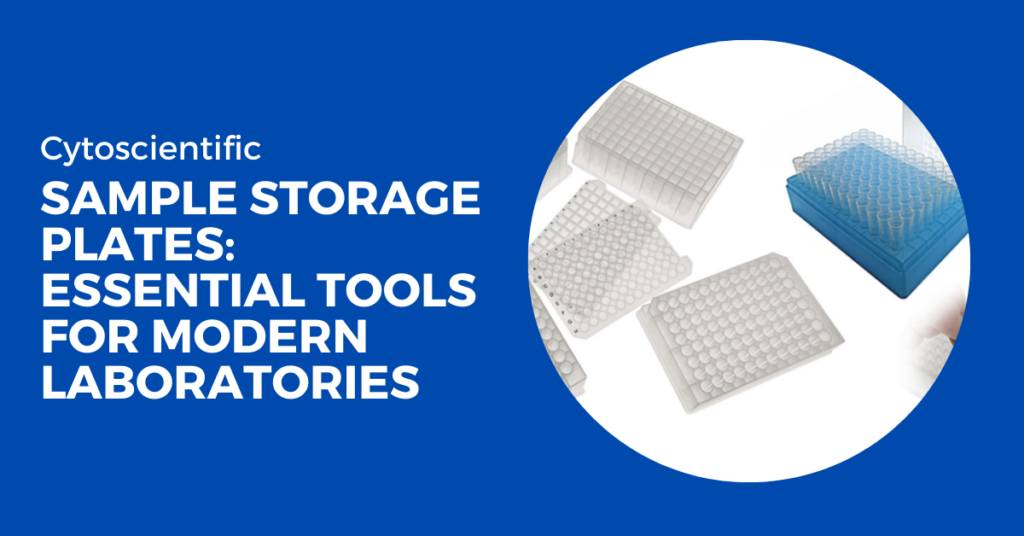Sample storage plates are designed to store and organize multiple samples in an efficient, compact format. Commonly used in biological, chemical, and pharmaceutical research, they allow for the easy handling of samples during storage, transportation, and experimental procedures. Their primary purpose is to keep samples secure, prevent cross-contamination, and ensure accessibility for further testing or analysis.
Types of Sample Storage Plates
96-Well Storage Plates
The 96-well plate format is one of the most widely used in research. It is ideal for experiments requiring multiple reactions or samples to be processed simultaneously. These plates can hold small volumes of liquids, making them suitable for ELISA, assays, and other analytical techniques.
Deep-Well Storage Plates
Deep-well plates offer greater storage capacity, making them ideal for large volume samples. These plates are commonly used in sample preparation for genomic and proteomic analysis, drug discovery, and other large-scale studies.
PCR Storage Plates
Designed specifically for polymerase chain reaction (PCR) techniques, these plates ensure uniform thermal transfer, essential for consistent reaction results. They can also be tightly sealed to prevent evaporation during thermal cycling.
Features of storage plates
- Multiple wells in various formats like 96-well or 384-well allow for high sample capacity.
- Constructed from durable, chemical-resistant materials like polypropylene.
- Designed to handle a wide range of temperatures, including cryogenic conditions.
- Includes options for lids, sealing films, or caps to protect against contamination and evaporation.
- Compatible with automated systems such as liquid handling robots and plate readers.
- Equipped with alphanumeric labeling or barcoding for easy sample identification.
- Offers high chemical compatibility, preventing reactions between the plate and stored samples.
Uses of Sample Storage Plates
Sample storage plates have a wide range of applications in laboratories. They are used to store small amounts of liquids, cells, or chemicals for various experiments. Here are some common uses:
Sample Organization: The structure of these plates helps keep samples organized. Each well can hold a specific sample, allowing researchers to manage multiple samples at once.
Long-Term Storage: Many sample storage plates are designed to keep samples for extended periods. They can be sealed to prevent contamination and evaporation, which is especially useful for sensitive or expensive materials.
High-Throughput Screening: In drug discovery and other large-scale research, sample storage plates enable high-throughput screening. This method allows labs to run thousands of tests simultaneously, saving time and resources.
PCR and DNA Studies: Some plates are designed specifically for Polymerase Chain Reaction (PCR) or DNA studies. These plates can withstand the extreme temperatures involved in these processes.
Best Practices for Using Storage Plates
Label Wells Clearly
Always label each well accurately, using a system that makes it easy to track samples. Barcodes or alphanumeric grids can be helpful to avoid confusion.
Seal Properly
Use appropriate sealing methods, such as sealing films, lids, or caps, to prevent contamination, evaporation, or spills. This is especially important when storing sensitive or long-term samples.
Store at Proper Temperature
Ensure that the sample storage plates are kept at the recommended temperature. For example, store cryogenic plates in freezers and other samples at room temperature or refrigeration as needed.
Avoid Cross-Contamination
Handle plates carefully to prevent cross-contamination between wells. Use sterile techniques and change pipette tips between samples.
FAQs
What types of materials are storage plates made of?
Most storage plates are made from high-grade plastic, such as polypropylene, which offers durability, chemical resistance, and compatibility with various lab procedures.
Can I reuse sample storage plates?
While some plates are designed for single use, reusable plates are available, particularly for applications where sterilization is possible.
Are sample storage plates compatible with automation systems?
Yes, many sample storage plates are designed to work with automated lab systems, such as liquid handling robots and plate readers, making them ideal for high-throughput environments.
Can sample storage plates be used for long-term storage?
Yes, many storage plates are designed for long-term use, especially when sealed properly. Cryogenic plates can even store samples at extremely low temperatures.

